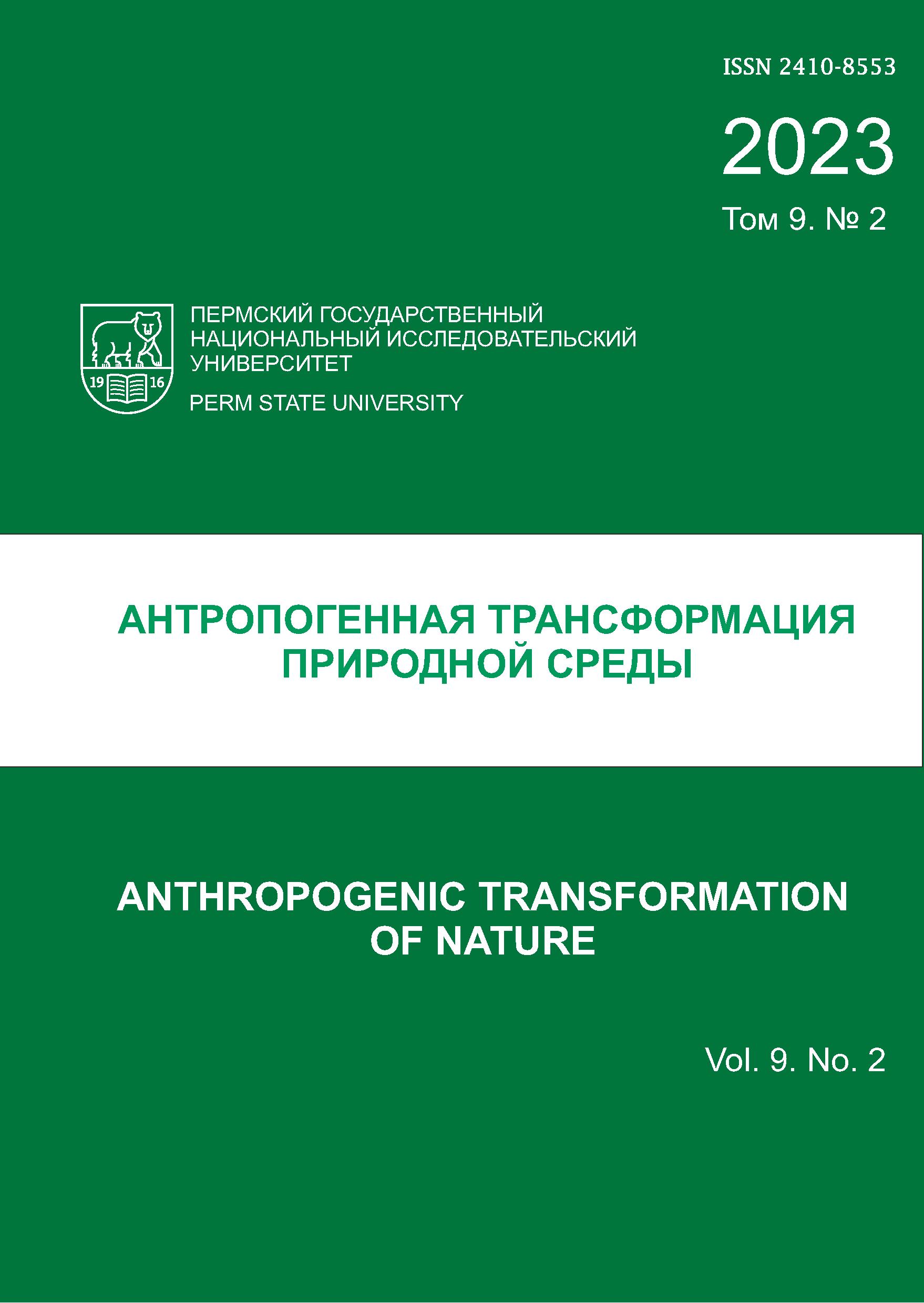Assessment of anthropogenic pressure on water resources and efficiency of their use: review of methodological approaches
DOI:
https://doi.org/10.17072/2410-8553-2023-2-55-67Keywords:
direct and indirect impacts, water intensity, water resources withdrawal, wastewater dilution rateAbstract
Anthropogenic pressure as a measure of quantitative measurement of human impacts on water resources is subject to evaluation in modern scientific research. The relevance of such a study is related to the quantitative limitation and qualitative transformation (pollution) of water bodies. There are two main methodological approaches - geographical and hydrological. The first one is characterized by taking into account to a greater extent indirect impacts on water bodies, the second one - direct and indirect (diffuse runoff). Types of impacts that make a significant contribution to the transfor-mation of natural water bodies (channel regulation, irrigated farming, flow diversions, industrial, municipal and agricultural water supply, drainage of marshes and wetlands, forest cutting and planting, urbanization, etc.) are described. The peculi-arities of use and reliability of the applied indicators in assessments of anthropogenic load are discussed. Available data and initial information for water use efficiency assessment are summarized.Downloads
Published
2023-12-06
How to Cite
Rybkina И. (2023). Assessment of anthropogenic pressure on water resources and efficiency of their use: review of methodological approaches. Anthropogenic Transformation of Nature, 9(2), 55–67. https://doi.org/10.17072/2410-8553-2023-2-55-67
Issue
Section
Pollution

